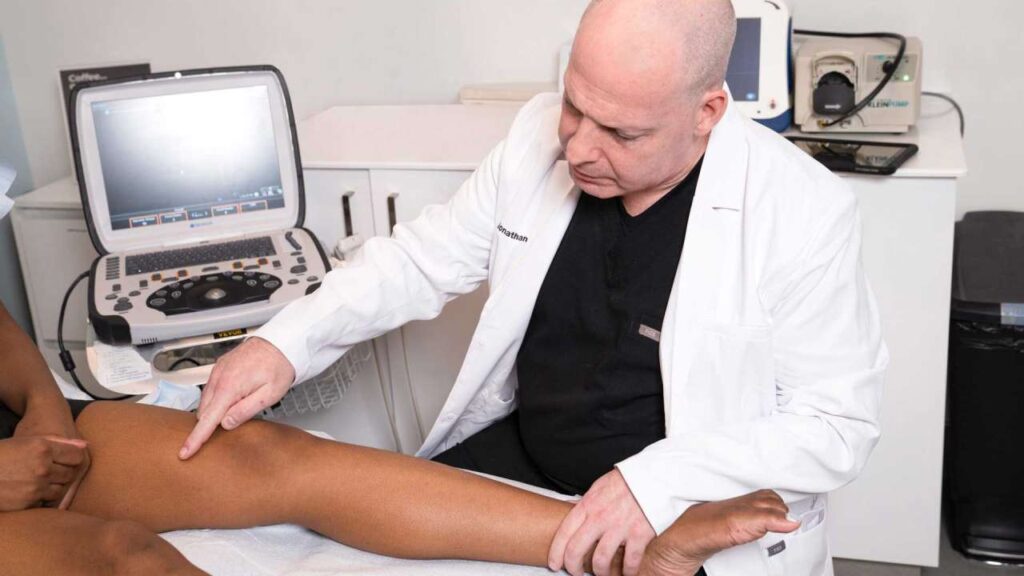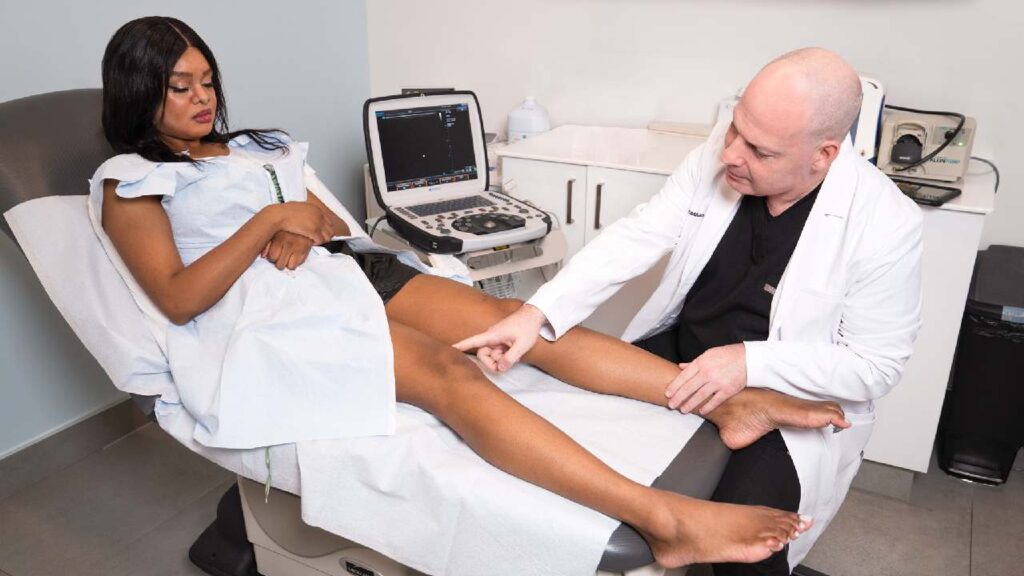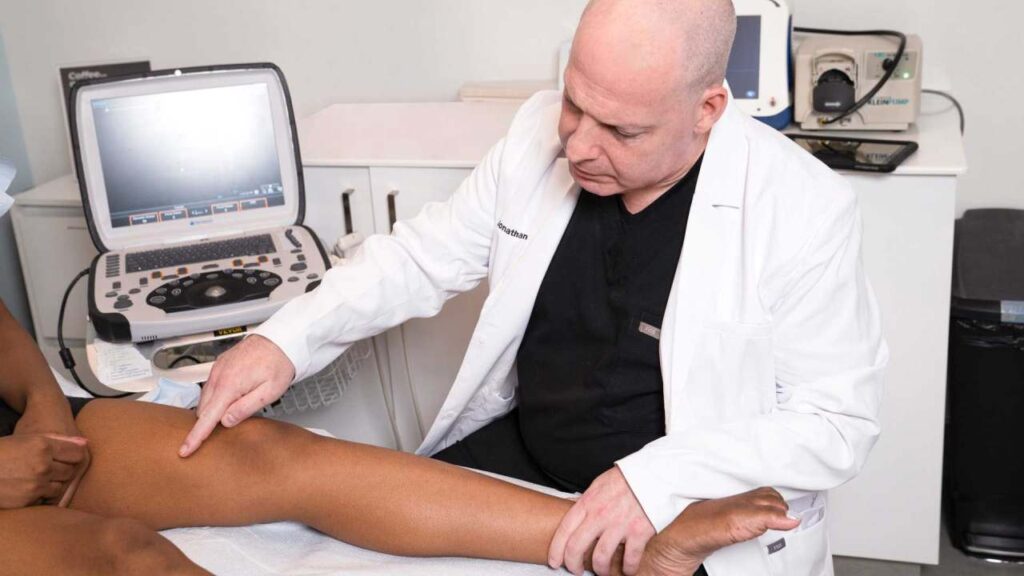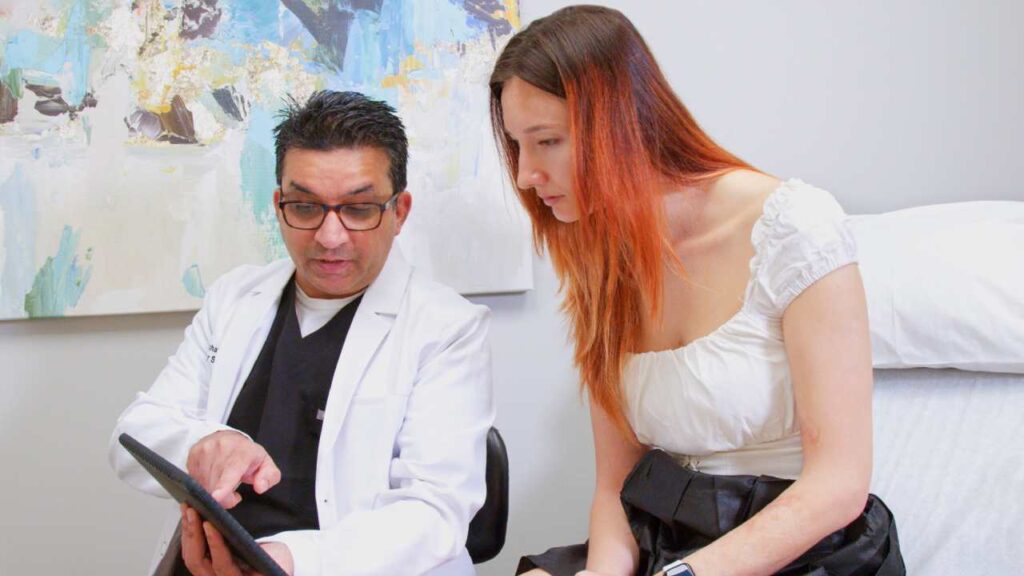If you are starting to see spider veins and varicose veins on your lower limbs or have been experiencing aching or tired legs, you may be dealing with a vein disease. Take note of the signs and symptoms you are experiencing, then click HERE to make an appointment at a vein treatment center with a specialist in venous medicine. This will help minimize damage to the veins and prevent further problems down the road.
Be sure to make an appointment at a vein center at a convenient location near you, so if you are located in New York, look for a “vein treatment center NY” for easy access and travel to your appointment.
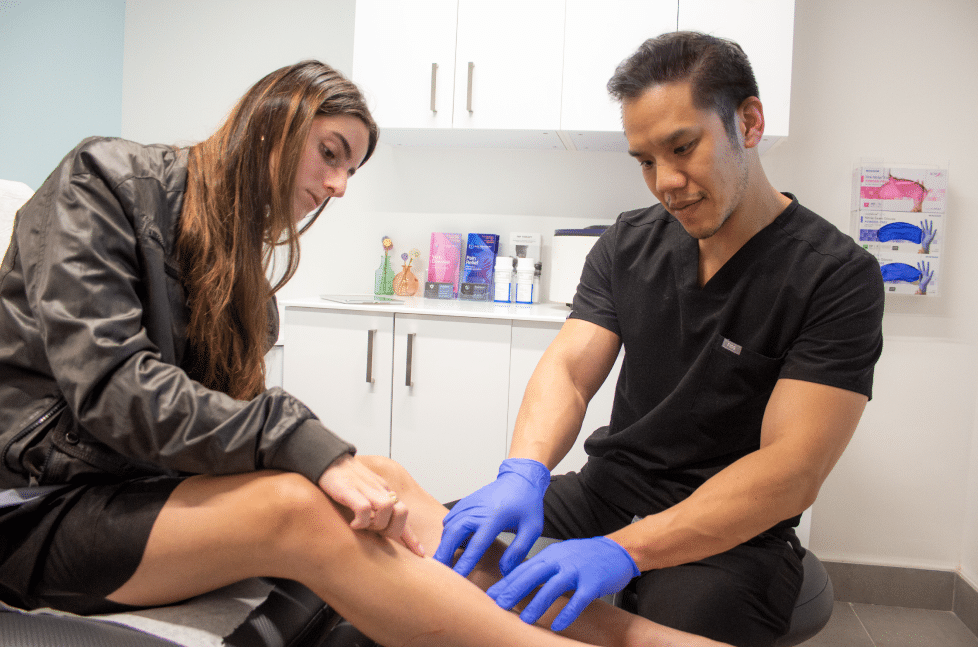
Check-In
When you get to the vein center, you will be asked to check in with the administrative staff, who will get your insurance information, identification, etc. Before you book your appointment, you will have an opportunity on the Vein Treatment Center website to check your insurance coverage for treatment, but more often than not, the procedure comes under health insurance coverage, including Medicare.
Questionnaire
At your appointment, you will be asked to answer a few questions in regards to your symptoms, lifestyle, and medical history to help your vein doctor better understand your condition, identify the root cause, and develop an individualized treatment plan.
Some questions could include:
- What are the signs of vein disease that you are experiencing?
Spider veins, varicose veins, and stasis dermatitis are signs of vein disease. These symptoms will escalate with time until the venous insufficiency that is causing them is treated, so arrange an appointment with a vein center as soon as you encounter them.
- What are the symptoms of vein disease you are experiencing?
Some symptoms of vein disease include heaviness or aching legs, leg fatigue or cramping, swelling in the feet or ankles, or varicose veins and spider veins.
- How old are you?
Natural wear and tear on the valves of your veins occurs as you age, increasing the risk of contracting vein disease over time.
- Do you have a family history of vein disease?
You have a 90% risk of contracting vein disease if either of your parents have vein disease, and there are many contributing genetic factors for vein disease.
- Do you have a medical history of blood clots?
If you’ve already had blood clots between your legs, you’re more likely to have venous insufficiency. The valves of the veins may be seriously impaired by these clots, also known as deep vein thrombosis (DVT).
- Are you pregnant?
Pregnancy increases your risk of vein disease due to changes in hormone levels, blood volume, and blood pressure. Female hormones such as estrogen or progesterone relax vein walls, which reduces blood pressure and can lead to venous insufficiency.
- What do you do for a living?
If your occupation or daily activities require you to sit or stand for long periods of time, it can put you at greater risk of vein disease.
- What are your diet and exercise habits?
Carrying excess weight puts too much strain on the veins, resulting in spider veins and varicose veins. Increased estrogen levels are also caused by fat deposits, which relaxes and enlarges vein walls, making them more noticeable on the skin’s surface.
Diagnosis
The vein doctor will check your large and small saphenous veins for valve damage, which can cause blood flow in the wrong direction, which is also known as venous insufficiency. The physician will take about 30 minutes to perform a Duplex ultrasound imaging test. It produces pictures of blood vessels on a transducer screen, which is non-invasive and does not involve radiation or drug injection.
Treating the Root Cause – Saphenous Veins
The diagnostic scan helps the vein doctor to develop a personalized treatment plan for you, which usually starts with treating the saphenous veins that feed all other veins. Previously, surgery was the only method of treating varicose and spider veins, but technological advances have made it easier to use minimally invasive techniques.
Minimally invasive therapy requires only a small incision instead of a large surgical opening, which means it takes less time for both the procedure and recovery. VenaSeal, Radiofrequency Ablations and Varithena are some of the available vein treatment options, all of which are intended to close and redirect blood flow through healthy veins.
Treating Spider Veins
Sclerotherapy, which is another minimally invasive treatment, is often used to treat the appearance of spider veins. A sclerosant is injected by a vein doctor into the damaged veins, which then redirects blood in healthier veins to improve circulation. The parts of the vein that are injected with medication will decrease over time because of a lack of blood flow. This reduces the look of spider veins and eventually the closed vein is reabsorbed into the body.
Recovery
Minimally invasive treatments have little to or no recovery time because the needles are small and cause minimal pain, so there is no anesthesia needed. The treatment works quickly and the procedure takes less than an hour. After your appointment in the vein treatment center, you can go back to work, school or home without skipping a beat.
Before-and-After Photos of Vein Disease
If you are comfortable with sharing your story, your photos speak a thousand words. Your experiences can raise awareness and confidence in people who have vein disease that they too can find relief from the fatigue, pain, and discomfort they have been experiencing.
If you are ready to get started on your vein treatment journey, you now know exactly what to expect, from the diagnostic evaluation to check for valve damage and venous sufficiency to the treatment and recovery. Book your appointment at the Vein Treatment Center New York in Manhattan or Long Island and go into your appointment at a vein center in NY feeling more prepared and informed about your diagnosis and treatment options!
